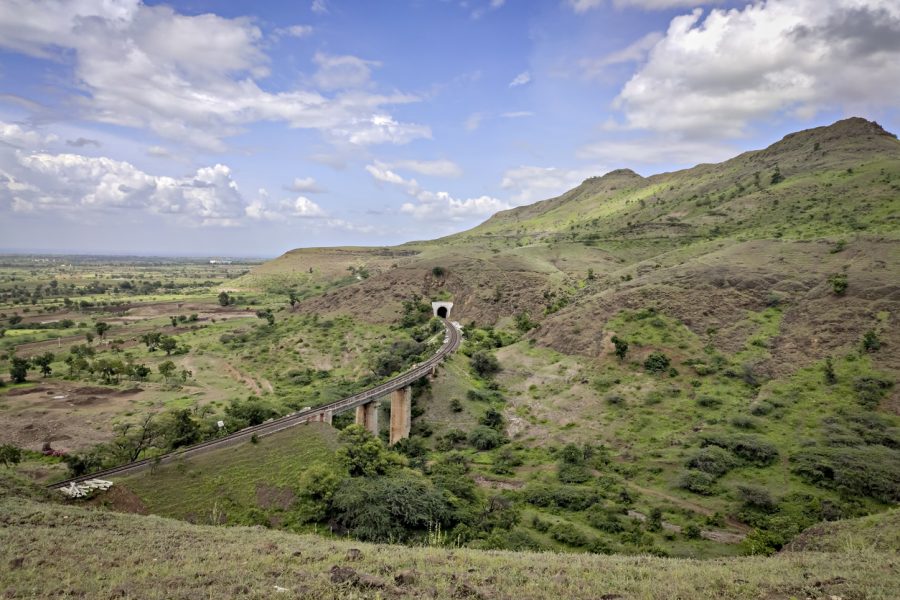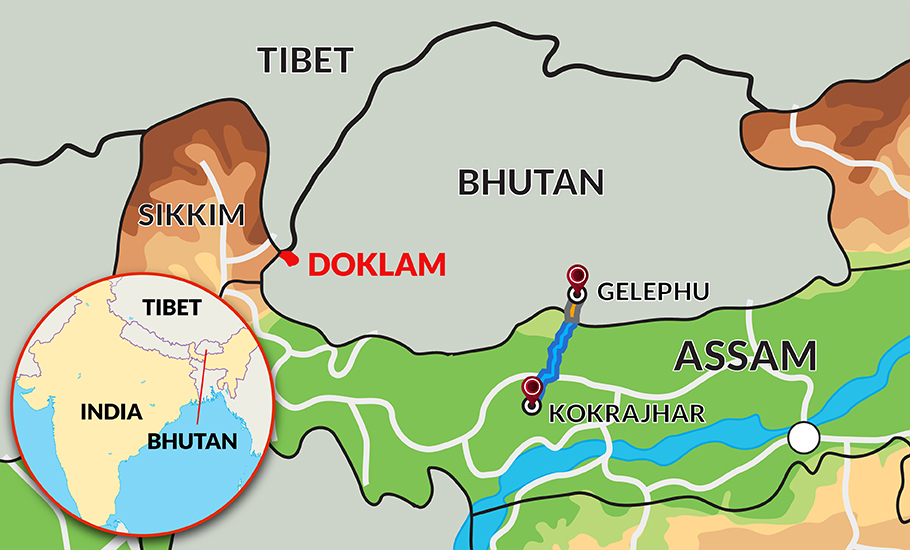
To Bhutan by rail: India seeks to boost border ties, counter China’s LAC plans

India’s decision to revive a much-delayed plan to extend its railway network to Bhutan will give an impetus to the Bangladesh, Bhutan, India and Nepal (BBIN) initiative and counter growing Chinese build-up along the Line of Actual Control (LAC).
The Northeast Frontier Railway (NFR) zone of the Indian Railways expects the preliminary “engineering and traffic” survey started recently to connect Kokrajhar in Assam with Gelephu in Bhutan to be completed by March 2023, NFR sources said.

Doklam plateau represents trijunction between India, Bhutan and China. Kokrajhar-Gelephu is the planned new route.
Boosting of multimodal connectivity by expanding railway links between India and its BBIN neighbours is one of the focus areas of the sub-regional initiative to provide seamless movement of people and goods within the bloc to enhance economic cooperation and people-to-people contact.
Investment requirements
The 57.7 km transboundary railway project will require an investment of ₹1,000 crore, as the proposed broad-gauge line would pass through the hilly terrains of Bhutan. The project is part of a memorandum of understanding (MoU) India and Bhutan signed in 2005 to set up five railway links between the two countries.
The project cost was then estimated at ₹554 crore. It was put in abeyance after an assessment study was completed in 2007-08, the Railway sources disclosed.
The Federal Premium | When ‘First View: China’ draws Indian tourists to far-flung Arunachal village
India again felt the need to develop rail links with Bhutan following the 2017 standoff with China at Bhutan’s Doklam plateau, a trijunction squeezed between the Himalayan kingdom’s Ha district to the east, Sikkim to the West and China’s Chumbi Valley to the north.
The Union government in October 2020 forwarded to its Bhutanese counterpart a copy of the field survey conducted by the Indian Railways to connect Mujnai in West Bengal with Neyopaling in Bhutan’s Samstse district. The project was to be started within a year.
Land acquisition
But the plan for laying the 37.5 km-long rail route had to be abandoned as it had to go through some tea gardens, causing land acquisition problems in West Bengal. If the project had gone through, it would have been strategically suitable for India because Samstse district in Bhutan is close to the China-Bhutan-India trijunction.
Following the cancellation of the project, Bhutan earlier this year urged India to provide it with a rail link via lesser settled areas of Assam, prompting India to revive the proposed Kokrajhar-Gelephu rail route. This plan will be economically more beneficial to Bhutan, but India may not gain much strategically since it’s not close to the China border.
Watch: India-Bhutan border reopened for first time since pandemic
The first-ever passenger rail link between India and Nepal was inaugurated in April this year. Now the rail link between India and Bhutan will further enhance transport and connectivity between BBIN countries.
A 17-member Bhutanese delegation comprising ministries and representatives of trade bodies of the country held a meeting with Indian Railways officials in Alipurduar, West Bengal, last month to discuss how best they could use India’s rail network to boost their country’s trade with India as well as Bangladesh.
Better infrastructure
Since Bhutan is landlocked, and in hilly terrain, it is looking to enhance transport infrastructure with India. For instance, in October, a fleet of 75 SUVs was despatched to Bhutan by road after the consignment was brought from Chennai by train to Hasimara in West Bengal. This multimodal route could be replaced by an India-Bhutan rail link, once it is operational.
In another instance, Bhutan has requested India to allow a rail link between Chilahati (Bangladesh) and Haldibari (West Bengal) for the transport of boulders and other items. From Haldibari, the consignments can be brought to Bhutan by road. This is again multimodal, but Haldibari is close to the Bhutan border, and the kingdom can save on road transport costs.
The development of rail links between India and the landlocked Bhutan and Nepal has also been given priority in the BIMSTEC (Bay of Bengal Initiative for Multi-Sectoral Technical and Economic Cooperation) masterplan for transport connectivity unveiled earlier this year.
The Federal Premium | Why Sikkim celebrates a treaty ‘inked’ in blood centuries ago
“If the landlocked member states (Bhutan and Nepal) have greater access to lower-cost rail services, they may be able to increase trade of lower value products for which road transport is cost prohibitive,” pointed out the BIMSTEC document.
Keeping the Chinese at bay
Apart from boosting regional and sub-regional connectivity, the rail link to Bhutan also has a strategic importance to counter Chinese efforts to expand its military capabilities along the disputed Himalayan border by carrying out massive infrastructure development activities in the area.
Last year, the communist nation operationalised the first electric high-speed train between Lhasa and Nyingchi in the Tibet autonomous region of China. It has also started building settlement structures along its disputed borders with Bhutan.
Also read: Tawang incursion: What China wants and why it’s no minor incident
As part of its initiative to ramp up connectivity along the China border, the Indian Railways has lined up three projects within the country to extend the rail link near the LAC.
As reported by The Federal in February this year, these projects will provide railway connectivity to Tawang and Aalo in Arunachal Pradesh and Nathula in Sikkim.


